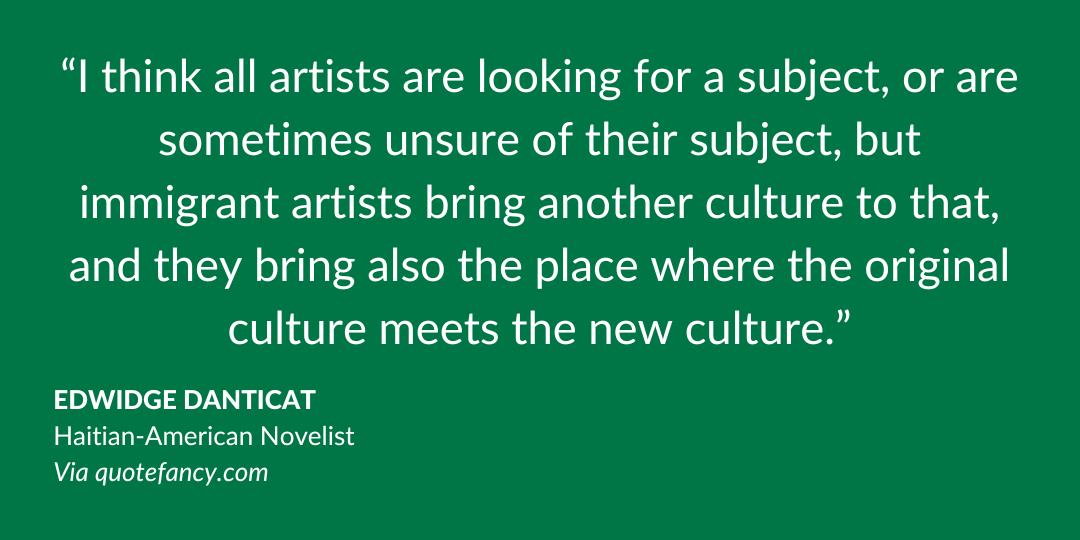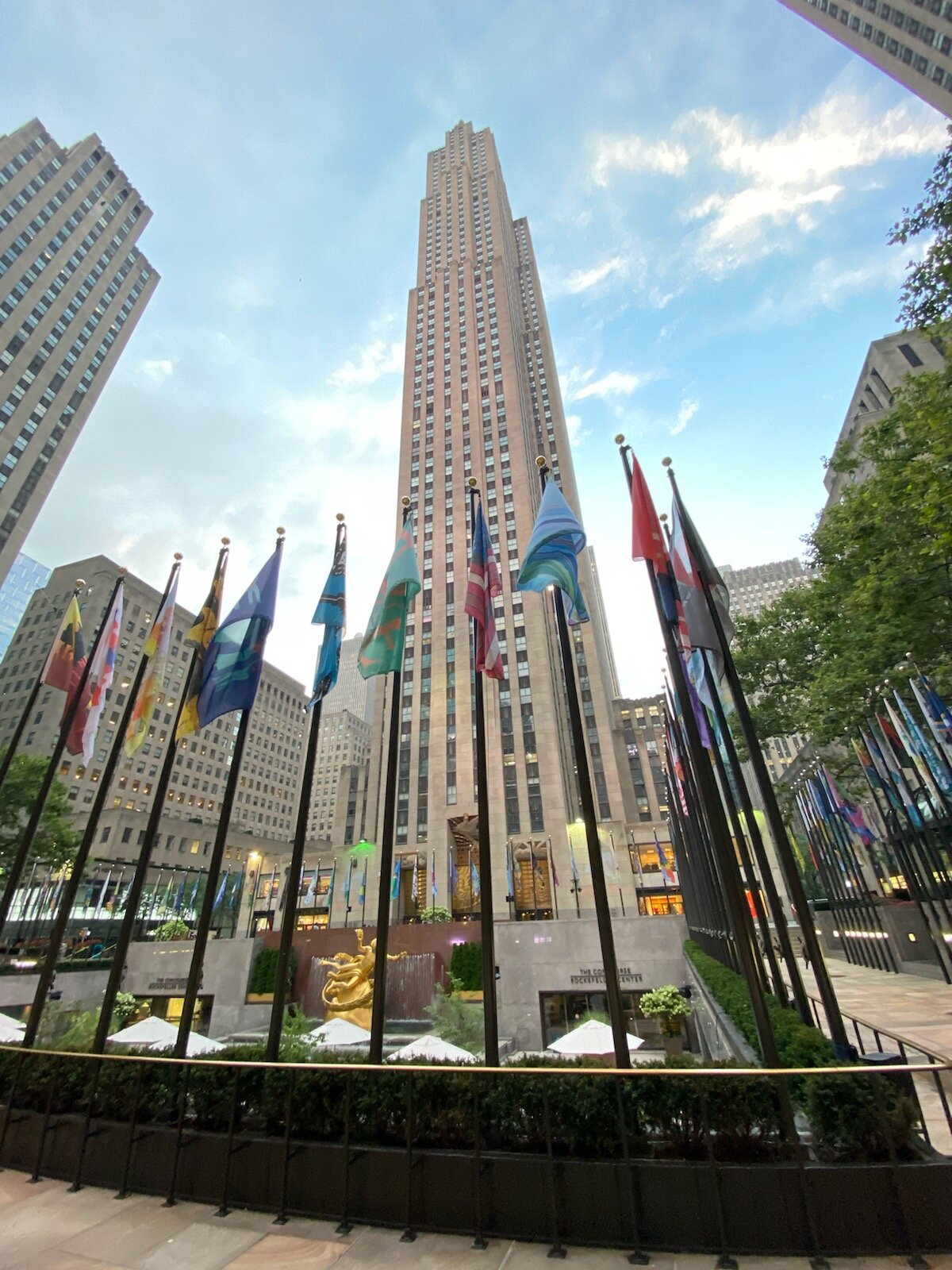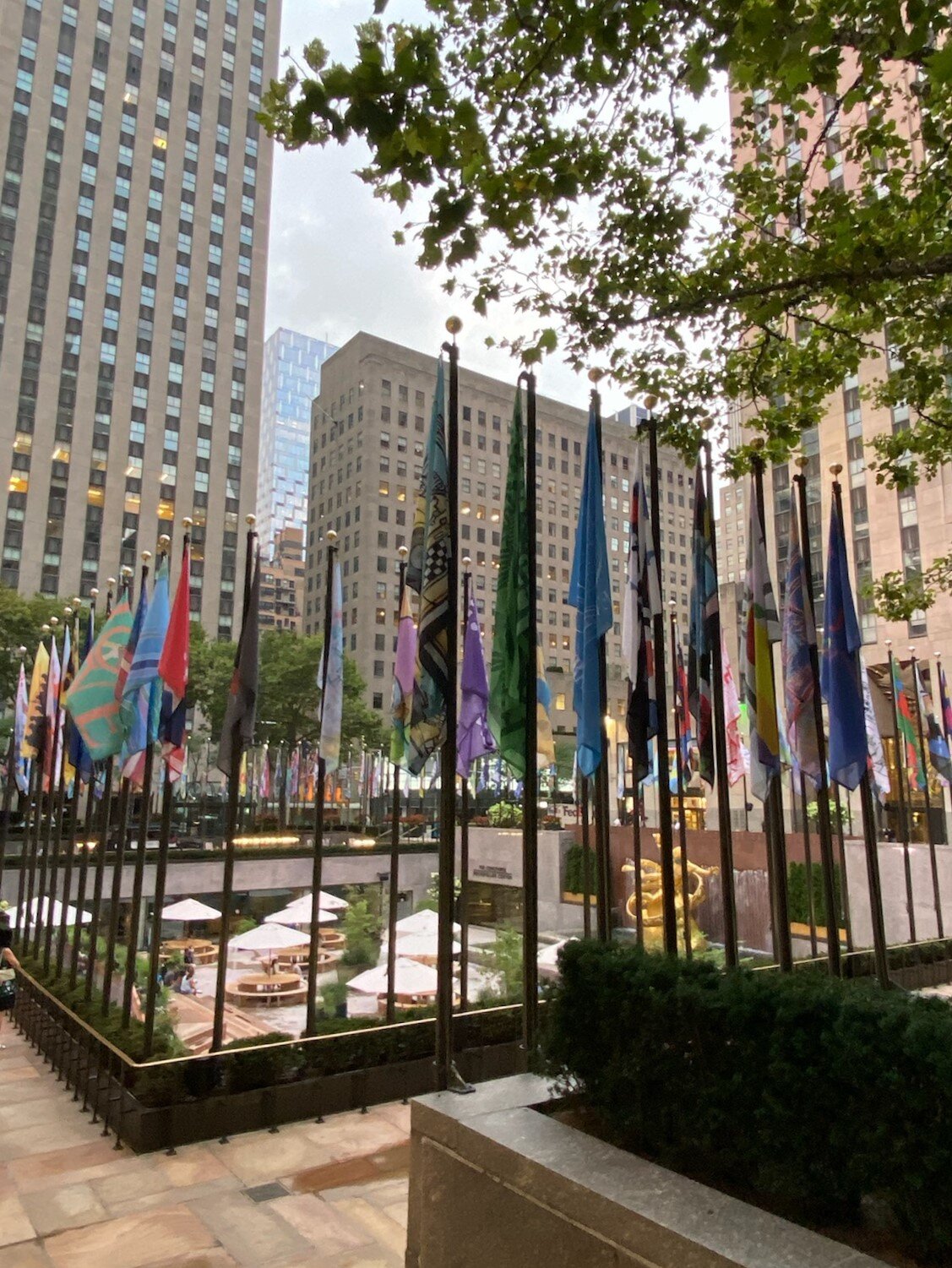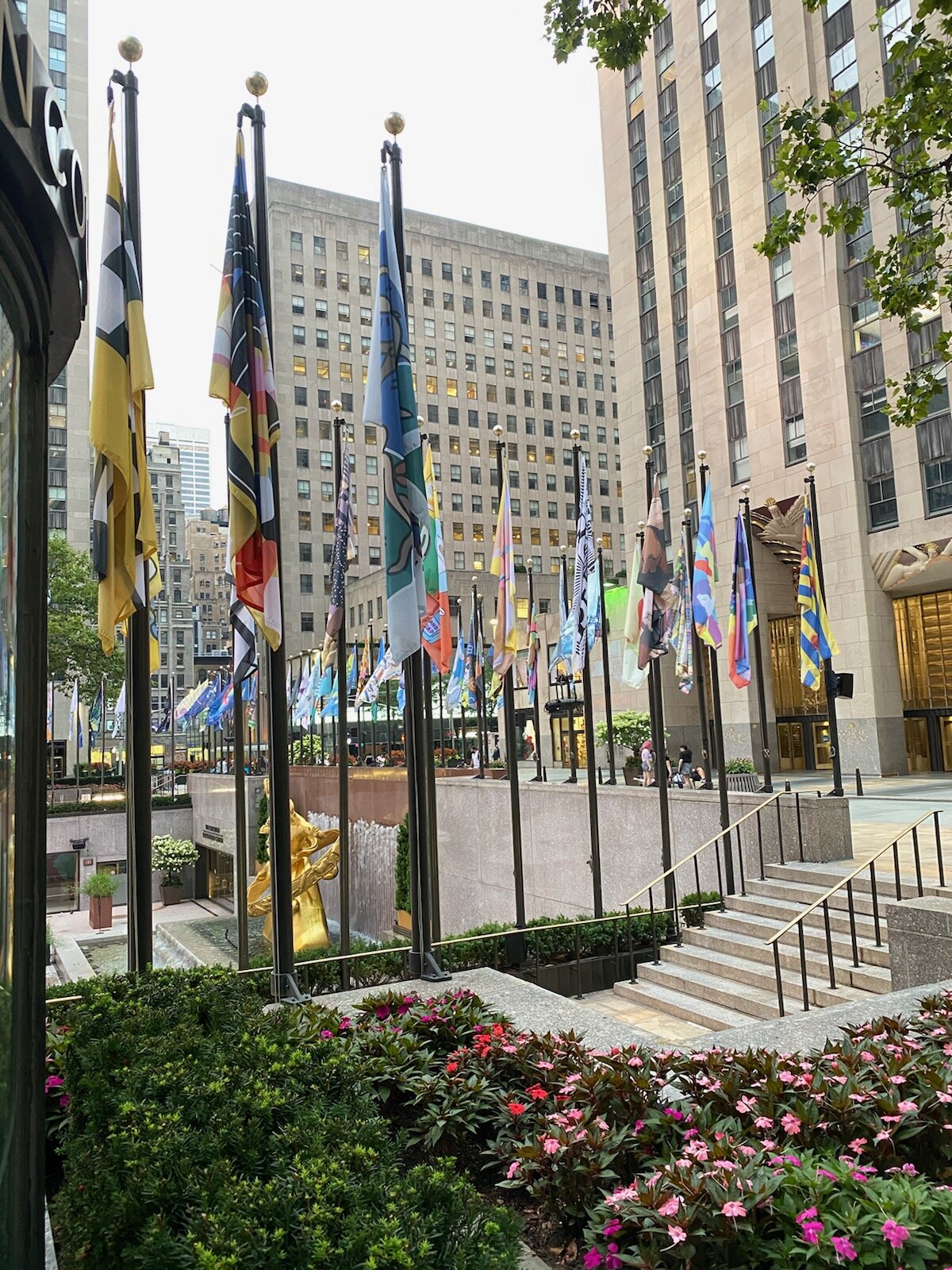The Flag Project at Rockefeller Center features 193 flags flying from the Rock Center parade of poles, all “celebrating in some way the energy, diversity, culture, strength, and resilience of our city.” Artists including Jeff Koons, KAWS, Jenny Holzer, and Marina Abramovic contributed site-specific works for the show but most of the designs were created by the public after an open call for submissions. More than a thousand entries from all over the world were submitted. The flags will be displayed until August 16, so you may need to hurry. This is one time where you can actually walk through Rockefeller Center without having to fight your way through tourists and TV executives. Wait, we actually miss that. Sigh.
The Immigrant Artist
Flag Project at Rockefeller Center
Dance Magazine: “Is the US Government Cracking Down on Artists’ Visas?”
Throughout the past year, dancers and US-based theatre companies have been experiencing delays and denials in attempts to obtain approvals for performances in the US. In late March, the Joyce Theater's annual gala performance had to include a last-minute substitution after two Paris Opéra Ballet dancers were unable to obtain visas. "It was a shock," Linda Shelton, executive director at The Joyce Theater, tells Dance Magazine. "In all 25 of my years here, I think we'd only been turned down once before. That was ages ago and we already had a feeling that dancer wouldn't be approved anyway, because of an issue with their passport. This was just a big, big surprise." Then, less than a month later, visa petitions for Bolshoi Ballet stars Olga Smirnova and Jacopo Tissi to perform at the Youth America Grand Prix gala were denied. Last year, South Korea's Bereishit Dance Company had to cancel a performance because of similar issues.
Read moreWind Sculpture (SG) I
Wind Sculpture (SG) I, by the British-Nigerian artist Yinka Shonibare, attempts to capture the invisible (in this case, the wind) in a moment of time. The fiberglass sculpture depicts a piece of fabric caught in a gust of wind, part of his “second generation” (SG) of artworks that explore the theme of making known the invisible. Resembling a painted West African fabric, the artwork "evokes a sense of freedom and possibility, which for the artist represents the originality of the hybrid." Shonibare, who split his childhood between England and Nigeria, regards himself as "a cultural hybrid, a product of complex and layered relationships forged by centuries of global trade, migration, politics, and cultural exchange." Through his artwork he invites us to "look beyond appearances and assumptions about identity." The beautiful piece is on view at Doris C. Freedman Plaza (in the southeast corner of Central Park) through October 14, 2018.
Immigration and Beignets: Highlights of the AILA Annual Conference June 2017
Last week, I attended my very first American Immigration Lawyers Association (AILA) annual conference. Lucky for me, it was in New Orleans, a city I have long wanted to visit. Protima and I had a great time touring the city, eating delicious food, and, oh yes, learning about immigration law! Being an AILA conference beginner, there was a lot to take in—four full days of panels was both exciting and exhausting. Here are some highlights of the experience.
Read moreO-1 Visas: Not Just For Artists
One of the most common visa types our law firm prepares is the O-1 for individuals with extraordinary ability or achievement. The O-1 is a temporary work visa granted in three-year increments with one-year extensions—allowing individuals of extraordinary ability to work in the United States for a single employer or sponsor. We’ve written a great deal about the O-1, from highlighting common misconceptions to imagining an O-1 consultation with a certain undersea character; however, one common misconception we have not spent a lot of time correcting is the assumption that O-1 visas are only for “artists.” While many artists are covered under this visa category, the defining characteristic of the O-1 is actually “extraordinary ability,” a distinction that can be made in nearly any field or industry.
Read moreO Visas for the Film and Television Industry: 10 Common Questions (and Answers)
So you’re a German production company looking to shoot a feature film in the United States, or an Australian actor who has been hired for a recurring role in an American television series. You’ve done a little research, possibly read our previous post on special considerations for film and television visas or common O-1 misconceptions, and now you realize that you and/or your production team are in need of O visas. (Almost any foreign national working on commercial or entertainment film or television projects in the US, for any length of time, will need an O-1 or O-2 visa.)
Read more5 Visas We Wish Existed
We are lucky here at the firm to meet so many interesting and talented people from all over the world. But nothing is more frustrating than when we meet someone with a genuine and legitimate reason to be in or come to the US, but we are unable to help them because there is no appropriate visa type that matches their qualifications or situation. This got us to thinking—what if we could invent or re-style existing visas to match some of the people we meet and cannot help. We may have to get creative with the alphabet here…
Read moreThe Washington Post: "Debating the residency status of Ariel from 'The Little Mermaid'"
The current topic of conversation in the immigration world is not about the upcoming H-1B cap filing date of April 1 (okay, that's important too—get ready, everyone!) but rather the incredibly important question about the residency status of Ariel from The Little Mermaid, the classic animated film beloved by pretty much everyone including most of the people in our office. The US House of Representatives Judiciary Committee started this debate by using Ariel in an official press release consisting of GIFs about a Republican bill to allow state and local governments to enforce federal immigration law. Yes, that's an actual press release. (House Speaker John Boehner would certainly approve). In response to the committee's release, several people questioned whether Ariel would be considered an "illegal alien" due to her residency in the MerKingdom under the sea.
The National Council of La Raza called the release a "case study in how to ignore facts and turn a heartbreaking situation for millions of American families into a juvenile BuzzFeed rip-off" and ZDNet blogger David Gewirtz noted that the press release used images from popular films and television that could be interpreted as copyright violations, which is interesting given that this is from "the committee that oversees copyright law."
More helpfully, The Washington Post's The Fix outlined Ariel's immigration possibilities to Denmark (where Hans Christian Andersen, the author of the much darker original Little Mermaid tale, originated) and also to the US, though immigrating here "would be difficult for Ariel." In an informal strategy session around the water cooler, our office suggested that an O-1 for an individual of “extraordinary ability" might be appropriate. What's Ariel's talent? Swimming, possibly, but more likely singing or modeling (she did make Prince Eric fall in love with her without saying a word, as Michal, one of our paralegals, noted). Several paralegals volunteered to work on the case. Citing attorney-client confidentiality, Protima would not confirm if Ariel would be our first Merpeople client.
At any rate, maybe it really is better for Ariel to stay under the sea.








